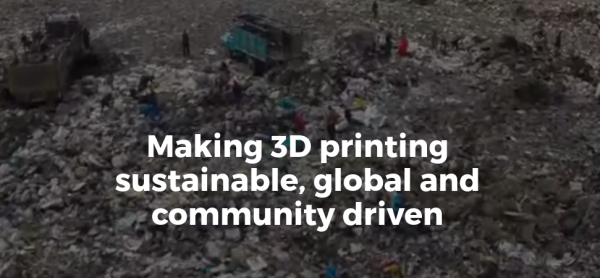3D Printing Will Be Able to Mature in Places Where Production Infrastructure Is Broken
Whatever broke it. Including pandemics, hopefully.

Three years ago, working in the H2020 Digital DIY project (DiDIY) I published some thoughts by Lyndsey Lewis, the co-founder of Reflow, which converts recyclable plastic into 3D print filaments using open source technology. I knew her work because, still for DiDIY, I had just re-published her thoughts on why 3D printing is interesting for women. Three years ago, instead, I re-shared another of her insights on 3D printing, because it was, and is, valid for any kind of Digital DIY. Since the same insight may be applicable in the exceptional circumstances of this COVID19 year, I will share it again.
What is particularly interesting about 3D printing
The profits of Reflow go to stabilize the income and working conditions of waste collectors and help build local economies and manufacturing capability in the regions where we work. It also keeps plastic bottles out of landfills, off the streets, from being burned, or in our oceans. When asked (full interview is here) what she found particularly interesting about the 3D printing industry, Lewis gave the following answer:
“it’s silly that 3D printing has been dubbed the next industrial revolution, but that it’s only directed at a small portion of the world population. I think 3D printing offers huge opportunities in developing regions. It will be able to mature in places where production infrastructure is broken in the same way that mobile banking did because of broken banking infrastructure."
Do you happen to know any place whose “production infrastructure is broken” and could use some (cheap!) “huge opportunities” this year, albeit for reasons very different from what Lewis, or almost anybody else, could have imagined in 2017?
Who writes this, why, and how to help
I am Marco Fioretti, tech writer and aspiring polymath doing human-digital research and popularization.
I do it because YOUR civil rights and the quality of YOUR life depend every year more on how software is used AROUND you.
To this end, I have already shared more than a million words on this blog, without any paywall or user tracking, and am sharing the next million through a newsletter, also without any paywall.
The more direct support I get, the more I can continue to inform for free parents, teachers, decision makers, and everybody else who should know more stuff like this. You can support me with paid subscriptions to my newsletter, donations via PayPal (mfioretti@nexaima.net) or LiberaPay, or in any of the other ways listed here.THANKS for your support!